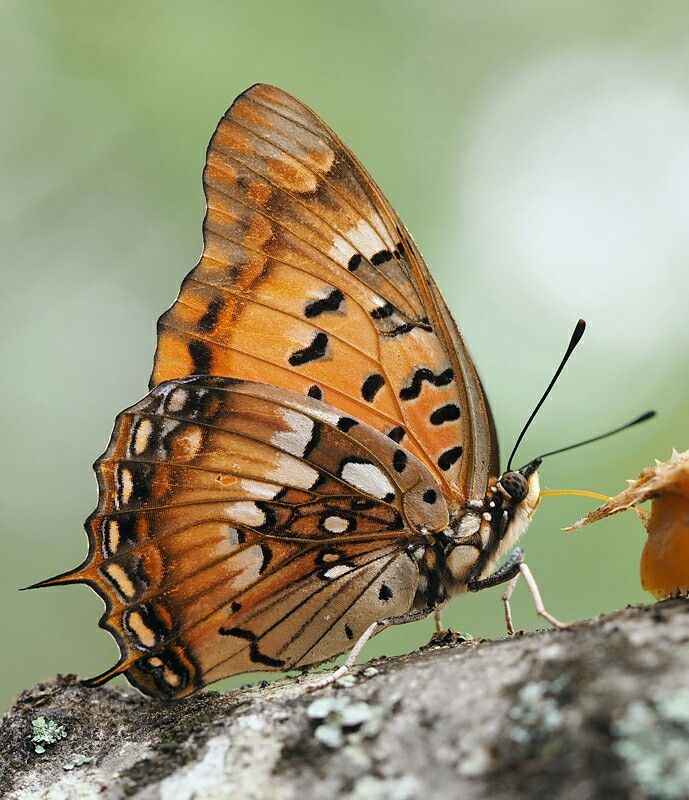Uganda, the “Pearl of Africa,” is widely known for its astonishing biodiversity and captivating landscapes. Amidst its lush rainforests, rolling hills, and tranquil lakes, the country also boasts of a mesmerizing array of butterfly species that have fascinated nature enthusiasts and scientists alike.
From the vibrant wing patterns to incredible metamorphosis, these delicate creatures paint the Ugandan wilderness with a kaleidoscope of colors.

A home to over 1,200 species, Uganda’s butterfly population showcases the country’s unique ecological richness and among the most iconic species is the African Giant Swallowtail (Papilio antimachus), which boasts a striking wingspan of up to 20 centimeters.
These majestic butterflies, with their black and yellow markings, gracefully flutter through the forests of South-western Uganda, captivating onlookers with their elegance.
Another notable resident is the Blue-Spotted Charaxes (Charaxes Cithaeron), a mesmerizing butterfly with shimmering blue spots on its wings. Found in the country’s Western and Central regions, these enchanting insects captivate both photographers and nature lovers as they dance amidst the sunlight filtering through the dense foliage.
The Rwenzori Mountains, also known as the “Mountains of the Moon,” host several unique species, including the Rwenzori Charaxes (Charaxes jahlusa), distinguished by its distinctively patterned wings of black, yellow, and white.
Butterflies not only add beauty to Uganda’s landscapes but also play crucial ecological roles. They act as pollinators, aiding in the reproduction of countless plant species. Additionally, they serve as indicators of ecosystem health, with their presence or absence reflecting environmental changes.

The conservation of Uganda’s butterfly species is an important endeavor for both local and international organizations. Initiatives such as habitat protection, sustainable agriculture practices, and public awareness campaigns seek to safeguard these delicate creatures and their habitats.
The Uganda Butterfly Conservation Society, in collaboration with government bodies and research institutions, actively works towards preserving these natural treasures for future generations.
For enthusiasts seeking to explore Uganda’s butterfly wonders, several butterfly sanctuaries and natural reserves offer immersive experiences. The Mpanga Forest Butterfly Sanctuary, located near Kampala, provides a serene environment where visitors can witness butterflies in their natural habitat.
Guided tours and educational programs allow visitors to learn about the life cycle, behavior, and ecological significance of these captivating insects.
As the world increasingly recognizes the importance of conserving biodiversity, Uganda’s butterflies serve as a reminder of the delicate balance within ecosystems. Their ethereal beauty and ecological importance make them a testament to the country’s commitment to preserving its natural heritage.
So, the next time you find yourself amidst Uganda’s breathtaking landscapes, be sure to keep an eye out for the vibrant flutter of wings. Embrace the magic of these enchanting creatures, for they embody the true essence of Uganda’s natural wonders.

Fun Facts about Butterflies
- Generally, butterflies have an average lifespan of 20 days to 40 days. It is just a few butterfly species that will live to see the 9th month.
- Butterflies can be seen anywhere across the world except on the Antarctica continent.
- Though they are coloured species they are only able to see three colors and these are: yellow, red and green.
- The majority of butterfly species have dark colors, and this is so to enable them absorb heat from their surroundings.
- Butterflies don’t possess chewing mouth-parts. They have a tubular straw-like appendage referred to as proboscis that enables them to gently sip nectar.
- They “smell” using their antennae and use their feet to taste
- The Male butterflies entice and attract the females through releasing a pheromone chemical or scent from their abdomens.
- Butterflies are very particular when selecting the leaves on which they lay their eggs.
- Butterflies are also extremely selective when picking which leaves to feed on.
- When folded, the wings of the butterfly are less colorful which offers great camouflage from their predators.
The writer is a conservation Educator a Uganda Wildlife Conservation Education Centre – UWEC
Further reading:
Uganda Butterfly Conservation Society: https://www.ugandabutterflies.org/
Mpanga Forest Butterfly Sanctuary: http://www.mpangaforest.com/
